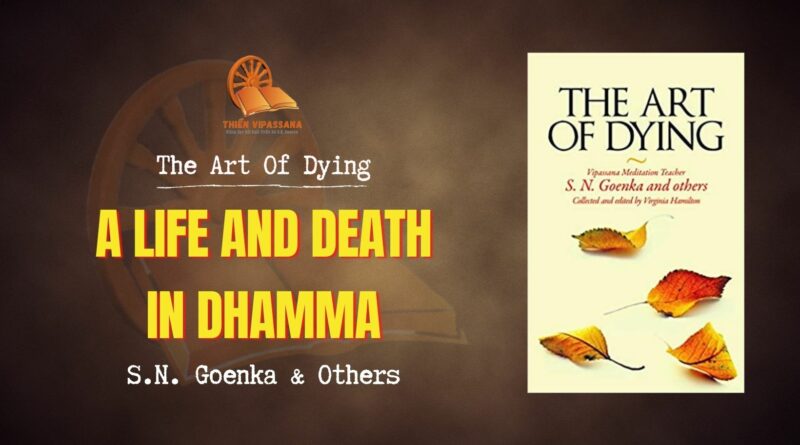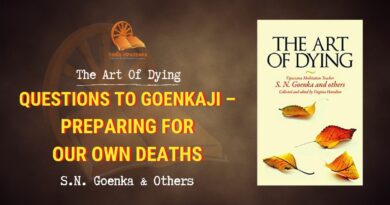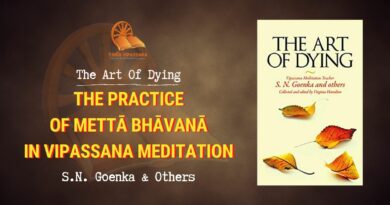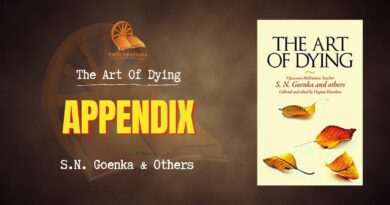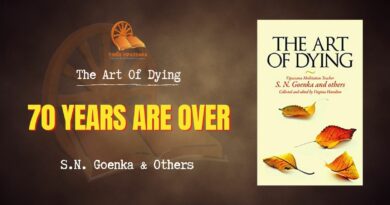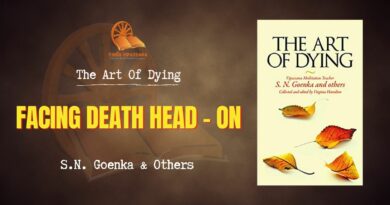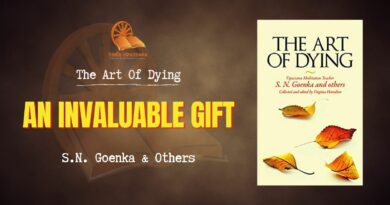A Life and Death in Dhamma
This story appeared in the September 1988 Vipassana Newsletter.
The Vipassana International Meditation Centre, Dhamma Khetta, near Hyderabad, was the first center to open in India. Goenkaji inaugurated it in September 1976 by planting a sapling from the sacred Bodhi Tree in Bodh Gaya and by conducting his 124th course there, attended by 122 students.
From its inception and for many years thereafter, the driving force behind the center was Mr. Ratilal Mehta, a highly successful businessman and devout member of the Jain community. His wife’s untimely death in an accident brought home to him the reality of suffering and, like so many before him, Mr. Mehta began seeking a way to deal with his anguish.
An article on Dhamma Khetta in the Vipassana Journal recounts how Mr. Mehta, who had been searching earnestly in many spiritual traditions, overheard a conversation between a Jain monk and a professor of Jainism. The two were discussing different types of meditation, and commented upon the unique experiences of meditators who had undertaken Vipassana courses. The conversation inspired Mr. Mehta to join the next course conducted by Goenkaji.
In the practice of Vipassana he found what he had been looking for. With characteristic zeal Mr. Mehta immersed himself in the practice, taking six more courses one after the other. But this was not all. He was eager too to help others find the Dhamma that had proved so beneficial to him. He organized courses in his home, and used his influence to bring people to learn Vipassana, among them all the members of his family.
The land on which Dhamma Khetta now stands was donated by the Mehta family and Mr. Mehta personally supervised most of the construction. Although his comfortable home stood nearby, he insisted on staying for long periods at the center, living as simply as possible and devoting all his time to his own practice and to serving others.
This great devotion to the Dhamma did not, however, diminish Mr. Mehta’s reverence for the tradition in which he had been raised. He continued to perform the duties of a pious Jain, and to honor and serve Jain monks and nuns. He did this recognizing that the essence of Jain teaching is the conquest of craving, aversion, and ignorance, and that Vipassana is the way to achieve this goal. He understood the universal nature of pure Dhamma, which transcends all differences of sect or philosophy.
In later years Mr. Mehta’s health deteriorated as cancer spread throughout his body, causing considerable pain. In his eighties he had to undergo major surgery. The operation slowed him physically but could not restrain his urge to practice and share the Dhamma. Despite the pain and physical deterioration, he continued to oversee personally the construction at Dhamma Khetta. Having barely recovered from his operation, he joined a long course at Dhamma Giri, eager to use in the best way whatever time remained to him.
It has been a year since Mr. Mehta passed away. His death was a notable and inspiring occasion. He knew that he was dying and suffered a great deal of pain, but did not complain. He wanted to be meditating when the end was near. Members of his family and friends were present. He requested to be bathed. Returned to bed, Mr. Mehta asked to be turned towards the east and helped into a sitting position. Those in the room were meditating and a tape of Goenkaji chanting was playing. The chanting tape ended with the bhāvatu sabba maṅgalaṃ blessings and the response of sādhu, sādhu, sādhu. Mr. Mehta’s body remained upright. The doctor checked his pulse and said, “He’s gone,” which surprised everyone since his head had not dropped, nor had his body collapsed.
When the news of Mr. Mehta’s passing reached Goenkaji, he was in California on a day between courses. Those serving the courses attended the morning group sitting as usual, with Goenkaji and Mataji present. At the end of the sitting, Goenkaji announced to the students: “I have wonderful news.” It was uncommon for Goenkaji to make such an announcement, and the students were even more surprised to learn of the marvelous way in which Mr. Mehta had died.
It is rare in the West for death to be viewed in a very positive way. And yet it is truly moving to hear of the ideal passing of a devoted meditator. At the moment of death, despite his great physical discomfort, Mr. Mehta’s mind was filled with awareness and equanimity, humility and love. Those present when he died, and those who heard about it later, felt fortunate to share this inspiring event.
Fellow meditators who knew Mr. Mehta recall his sprightly personality, great determination, energy, and enthusiasm. Today Dhamma Khetta, which has grown to a facility accommodating 350 students, stands as a memorial to his devoted service, a service that continues to bear fruit.
The yardstick to measure one’s progress on the path of Vipassana is not the type of sensation one experiences. The yardstick is the degree to which one has succeeded in ripening one’s awareness and equanimity. If a student bears this nature of the technique in mind, he or she is in no danger of going astray in the practice and will certainly keep progressing toward the goal.
—S.N. Goenka
May I be calm and serene, unruffled and peaceful. May I develop a balanced mind. May I observe with perfect equanimity whatever physical sensation arises on my body.
—S.N. Goenka

